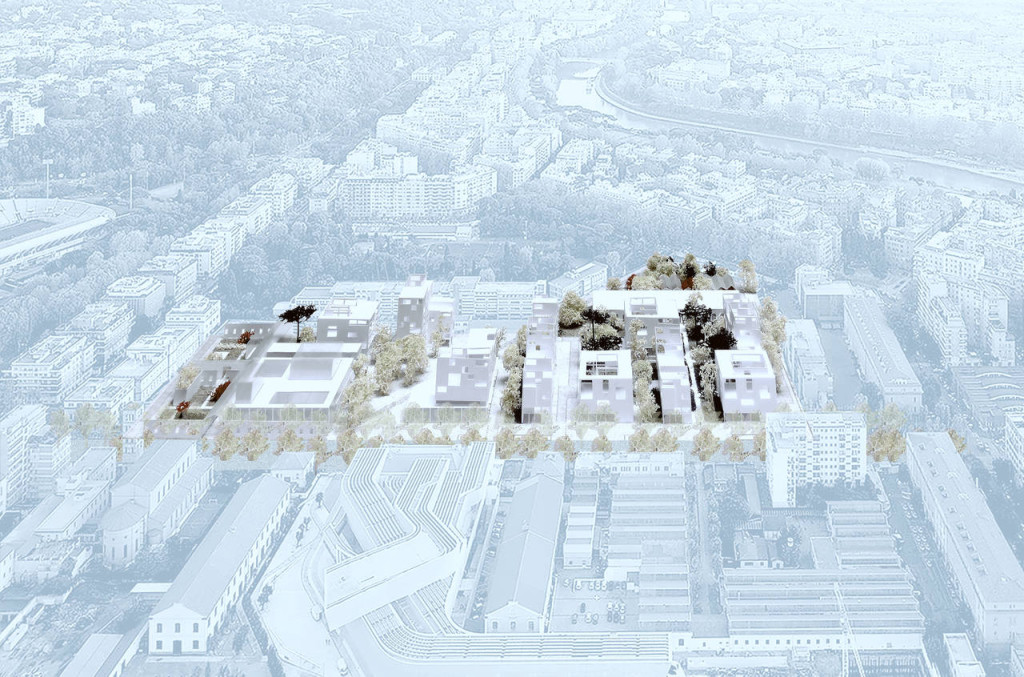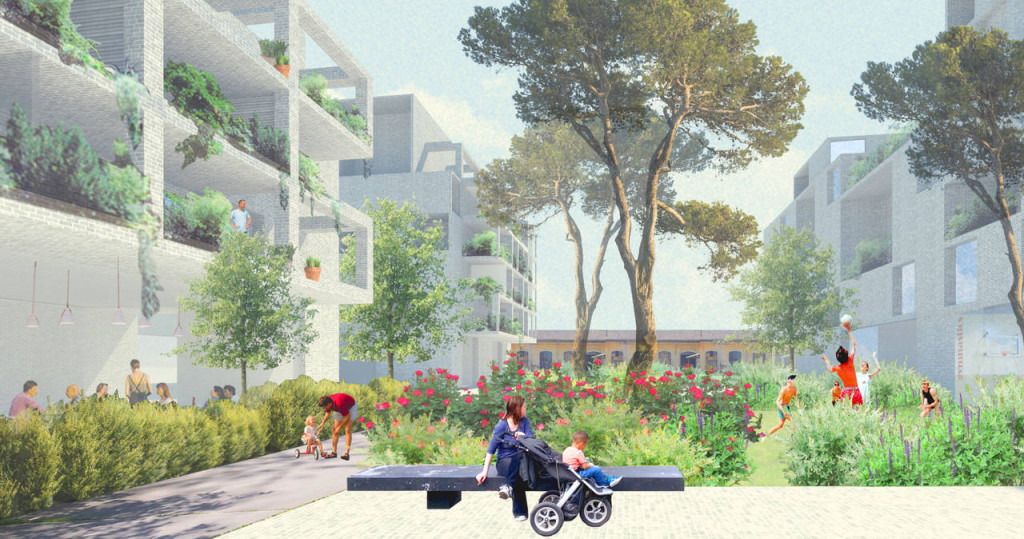Studio 015 Paola Viganò is the winner of the international design competition "Progetto Flaminio" for the masterplan of new district surrounding the city of Science in Rome. The winner has been announced at the end of june by Marco Sangiorgio ceo of CDP investimenti, during the award ceremony in Rome. The Competition has been launched on 23 December by CDP Investimenti Sgr together with the Municipal Government in order to face the regeneration and development of a significant part of the city, already characterized by an intense process of transformation. Situated at the edge of the historic city, the 5 hectare competition site is home to important works of architecture from the twentieth century (the Foro Italico, Olympic Village, Parco della Musica, MAXXI Museum). The program accommodates a residential district of 35.000 m2, retail and leisure facilities for 10.000 m2, and public spaces for 14.000 m2, together with the City of Science.
246 teams entered the first stage of the competition after it was launched in December. Only 6 teams were chosen for the second stage, receiving 24,000 euro each to develop their proposals. In order to participate to the Competition architects were asked to submit a curriculum and three pages to explain the design approach. The six shorlisted teams were Juan Navarro Baldeweg / Enrico Da Gai (Madrid-Roma), Studio 015/Paola Viganò (Milano), Caruso St John Architects (Londra), KCAP Architects&Planners (Amsterdam), Labics-Paredes Pedrosa Arquitectos (Roma-Madrid), Ian+ (Roma).

The project
The plan by Studio 015 Paola Viganò is based on an urban structure solidly anchored to the definition of public space and to “ground plan”, the idea of a settlement principle that, reinforcing the pattern of this part of Rome, may well reach beyond the limits of the actual project area. The hypothesis has the purpose of making explicit a reflection on space, and at the same time clarifying its flexibility, with the awareness of the complexity of a change on this scale undertaken in contemporary Rome.
“Way of positioning the buildings and of being building in the city”. In the words of Bernardo Secchi in a lesson many years ago, the disposition or layout, the position in space of a group of buildings defines a “way of being” in the city. A permeable urban structure running north‐south, announced by the fine existing rows of linden trees perpendicular to the promenade of via Guido Reni, once again finds the porosity otherwise and elsewhere denied by the huge military enclosures, establishing a considerable continuity between the two axes of the trident, via Masaccio to the north and viale del Vignola to the south, and involving the Maxxi piazza; a choice of layout that, thanks to its simplicity, enables a variety of modes of living and of open spaces. The settlement principle is not confined to a disposition or layout, but it comprises a structure of open and public spaces that enhance via Guido Reni, extending the public space and imagining its transformation into a tree‐lined promenade; hence the link between the city and the river, between the Ponte della Musica and the Monte Mario reserve to the west, and the Parco della Musica and the hill of Villa Gloria to the east; this much broader space features various flows: pedestrians, public transport, cars at low speed. These choices, that form the basis of the structure, are combined with that of dedicating the southern area to a park and public facilities, in continuity, at the moment only visual, with the park of Villa Flaminia, enhancing the quarter and the overall permeability of the space. Public facilities (largescale as in the Città della Scienza in it different possible configuration and smaller scale), businesses and services enrich the tissue, articulating and defining the role of the public space (metropolitan, urban and pertaining to the local quarter).

Architects: Studio 015 Viganò (Paola Viganò) Milano
Team: Simona Bodria, Uberto degli Uberti, Laura‐May Dessagne, Alessio Tamiazzo, Kasumi Yoshida e Quinyi Zhang
Consultants: Environment and energy sustainability, hydraulics and mobility D’Appolonia spa (Chiara Farinea, Alberto Giambellini, Lorenzo Facco, Andrea Tomarchio, Manuela Sciutto, Giorgio Bonvicini, Giada Barla)










